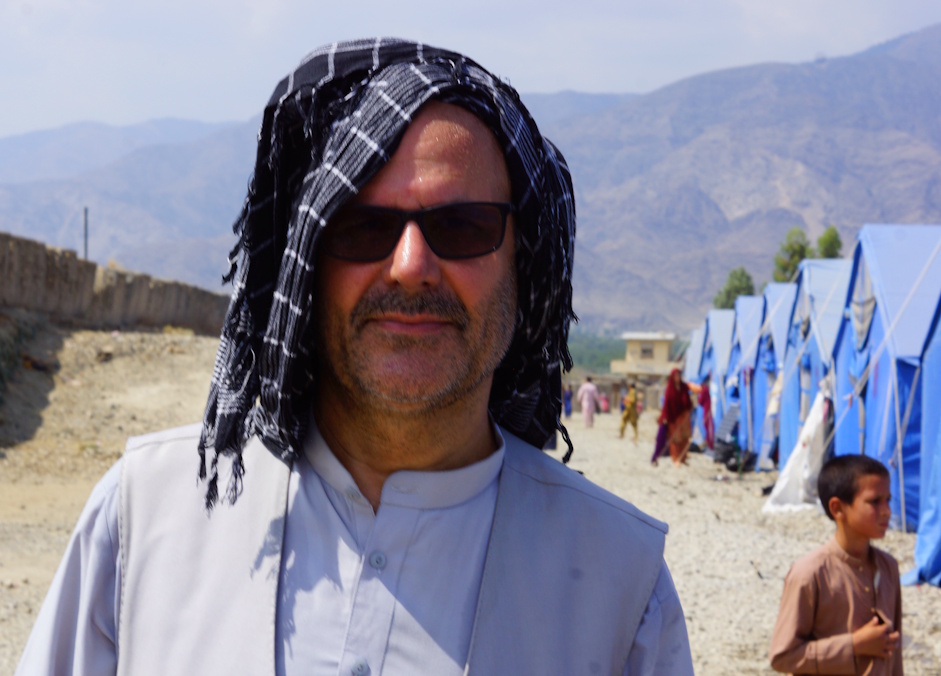By admin
Copyright dawatmedia24

The Gendered Impact of Disaster:
Analysis of the 2025 Kunar Earthquake impact on Women and Children
This paper examines the systemic gender-based disparities exacerbated by the humanitarian response to the 6.2 magnitude earthquake that struck Kunar province, Afghanistan, on August 31, 2025. The study analyzes how pre-existing Taliban policies, specifically the ban on female aid workers, combined with socio-cultural norms, created a cascade of failures in emergency aid distribution, access to healthcare, and long-term recovery, disproportionately affecting women and children. Data from international organizations and field reports indicate that the absence of female personnel directly correlated with increased mortality rates among women, neglected specific health needs, and hindered economic rehabilitation. The article concludes that effective disaster management in contexts like Afghanistan is impossible without the integration of gender-sensitive frameworks and the active participation of women at all stages of relief and recovery.
Introduction
Natural disasters are not gender-neutral. The 2025 Kunar earthquake (M=6.2, depth 8-10 km), which resulted in an estimated 2,200 fatalities and over 4,400 injuries, served as a critical case study revealing how pre-existing social, political, and economic inequalities dictate vulnerability and survival. While the seismic event’s destructiveness was rooted in geological factors—its shallow depth and location on the active tectonic boundary between the Indian and Eurasian plates—the human toll was profoundly shaped by man-made systems.
Since their return to power in 2021, the Taliban administration has systematically restricted women’s rights, including bans on secondary and university education, employment in NGOs and international organizations, and freedom of movement without a male guardian (mahram). This paper argues that these policies created a parallel disaster, severely crippling the humanitarian response and ensuring that the most vulnerable populations—women and children—bore the brunt of the catastrophe. This analysis synthesizes field data and international reports to delineate the mechanisms of this systemic failure.
Methodology
This study employs a qualitative case study methodology based on secondary data analysis. Primary sources include reports from United Nations agencies (WHO, UN Women, UNDP, UNFPA), statements from Taliban officials, and testimonies from affected individuals collected by news agencies and aid organizations. A gender analysis framework is applied to examine disparities in impact, access to aid, and recovery prospects based on gender.
3.1. The Critical Gap in Emergency Response: The Absence of Female Personnel
The most immediate consequence of the Taliban’s employment ban was a dramatic shortage of female aid workers on the ground. The World Health Organization (WHO) urgently called for the lifting of these restrictions, citing a “worrisome lack of female personnel.” A WHO representative reported that approximately 90% of health personnel in the affected areas were male. The remaining female staff were largely midwives and nurses without extensive experience in treating major trauma.
This deficit had direct life-or-death implications. Testimonies revealed that due to strict cultural norms of purdah (seclusion) and the absence of female rescuers, many women trapped under rubble were not reached in time. A female volunteer noted, “Many male volunteers were unwilling to touch women… as a result, many women remained missing due to neglect.” UN Women further highlighted this disparity, reporting that during the 2023 Herat earthquakes, six out of every ten fatalities were women, and two out of every three injured were women—a trend that held true in Kunar.
3.2. Systemic Barriers to Healthcare Access
The restrictions compounded pre-existing weaknesses in the healthcare system. Even where female doctors were technically permitted to work, many had fled the country after the Taliban’s return. Those who remained faced severe operational constraints due to the mahram requirement.
This situation created a particular crisis for maternal and child health. Reports from the Afghan Ministry of Women’s Health (under Taliban administration) indicated that only 23% of hospitals had fully staffed female wards. An estimated 68% of rural women could not access hospitals due to the lack of a mahram. The United Nations Population Fund (UNFPA) estimated that over 11,600 pregnant women were affected by the earthquake, a dire figure in a country with one of the world’s highest maternal mortality rates. The inability to consult male doctors on pregnancy and childbirth-related issues due to cultural constraints left these women with virtually no care.
3.3. Compounding Vulnerabilities in Displacement Camps
The challenges extended beyond the initial rescue phase. Assessments weeks after the earthquake found thousands of families still living in open spaces. A critical shortage of gender-segregated toilets and washing facilities posed severe security and health risks for women and girls. An aid worker from a local NGO stated, “They mostly go to the toilet late at night or before the morning prayer.” This practice exposed them to safety threats and contributed to the spread of diseases like diarrhea and fever due to poor sanitation. The provision of aid, such as medicines or hygiene kits, was rendered ineffective without the basic infrastructure and female personnel to distribute them.
3.4. Long-Term Economic Marginalization
The earthquake’s impact was also economic. Traditional inheritance laws and social practices often deprive women of property rights. Following the destruction of homes, many female-headed households—which UNDP estimates constitute 85% of households below the poverty line—found themselves without legal claim to land or resources for rebuilding. With 78% of household incomes controlled by men, widows and women who lost male breadwinners faced extreme economic precarity, making long-term recovery nearly impossible.
Discussion: A Man-Made Crisis within a Natural Disaster
The response to the Kunar earthquake starkly illustrates that systemic gender discrimination is not only a human rights violation but a critical failure of disaster governance. The Taliban’s policies transformed a natural hazard into a gendered catastrophe. While the courage of male and female responders saved countless lives, the operational environment was systematically sabotaged.
International aid, while crucial, was hamstrung by these local policies. The mahram requirement, reinforced by Taliban decrees, acted as a logistical chokehold on aid delivery. The solution requires moving beyond short-term negotiations for exceptions towards a comprehensive, long-term strategy that embeds gender justice at the core of disaster risk reduction and humanitarian action.
Recommendations
A multi-tiered, gender-sensitive approach is essential for future disaster preparedness and response in Afghanistan:
Short-Term:
Negotiate Specific Protocols: International actors must secure binding agreements for the safe and unrestricted movement of female aid workers in emergency contexts.
Deploy Mobile Health Units: Expand the use of mobile clinics staffed by female health professionals to reach remote and conservative communities.
Train Male Responders: Implement training programs for male aid workers on culturally sensitive ways to assist female survivors when female personnel are unavailable.
Medium-Term:
Skill-Building Programs: Initiate training programs for women in earthquake-resistant construction techniques, creating livelihood opportunities and empowering them in the rebuilding process.
Expand Telemedicine: Invest in telemedicine systems to allow women to consult female doctors remotely, bypassing mobility restrictions.
Targeted Economic Support: Provide cash-for-work programs and small grants specifically targeted at female-headed households.
National Risk Assessment: Develop a national earthquake risk assessment plan that incorporates gender-based vulnerability mapping.
Legal Advocacy: Continue international pressure to guarantee women’s rights to education, work, and property, which are foundational to resilience.
Gender-Sensitive Frameworks: Integrate mandatory gender-sensitive protocols into all humanitarian coordination mechanisms operating in Afghanistan.
Conclusion
The Kunar earthquake was a natural event, but the inadequacies of the response were man-made. The Taliban’s ban on women’s work engineered a secondary crisis, ensuring that the most vulnerable were left behind in both receiving and delivering aid. The tragedy demonstrated that the exclusion of women from public life and the workforce is not merely a violation of human rights but a profound impediment to effective governance and humanitarian action, ultimately harming the entire society. Building resilience to future shocks in Afghanistan is contingent upon dismantling these systemic barriers and recognizing that women’s empowerment is not a peripheral issue but a fundamental component of effective disaster management.
Support Dawat Media Center
If there were ever a time to join us, it is now. Every contribution, however big or small, powers our journalism and sustains our future. Support the Dawat Media Center from as little as $/€10 – it only takes a minute. If you can, please consider supporting us with a regular amount each month. Thank you
DNB Bank AC # 0530 2294668
Account for international payments: NO15 0530 2294 668
Vipps: #557320
Donate Here



